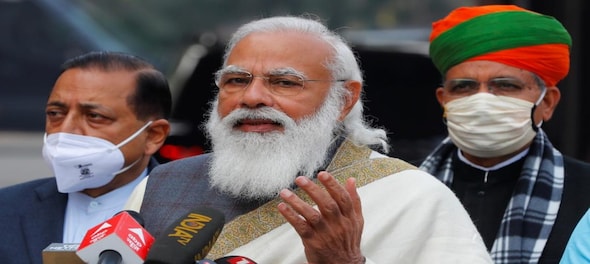
Prime Minister Narendra Modi's cabinet is expected to see 18 new faces in the long-awaited reshuffle. BJP leaders -- new and old, young and veterans --, as well as allies, will be accommodated in key roles. The national capital is abuzz with activity, VIP arrivals, meetings, and much more.
Here are all your questions answered about the Cabinet reshuffle
What is the difference between Cabinet reshuffle and expansion?
A Cabinet reshuffle refers to shifting portfolios from ministers for a variety of reasons —performance of the ministers, accommodating allies, promoting leaders who have performed well, expertise, and even reduce the executive burden or to streamline it.
During expansion, the size of the Union Cabinet is enhanced with the addition of new ministers. Additional ministers may be inducted into the Cabinet at three ranks — senior ministers, junior ministers, and deputy ministers. An expansion in the Union Cabinet is always accompanied by a reshuffling of responsibilities, as new members need new portfolios to handle.
Senior ministers are referred to as 'Cabinet Ministers' and are responsible for leading a Ministry of the government. Junior ministers are inducted as either ‘Minister of State (Independent charge)’ or as ‘Minister of State (MoS)’. An MoS Independent charge does not report to any Cabinet Minister, as there is no associated ministry for their portfolio. An MoS on the other hand reports to a Cabinet Minister, as they are tasked with specific responsibility within a Ministry.
Is there a Constitutional limit on the size of the Union Cabinet or at the state level?
The 91st Amendment to the Constitution on July 7, 2004, introduced Article 75 (1A) of the Constitution. Under Article 75 (1A), it is clearly stated that the Union Council of Ministers cannot exceed more than 15 percent of the number of MPs in the Lok Sabha. The number of MPs in the Lok Sabha is 545, which brings the maximum number of Ministers in the Union Cabinet to 81 (rounded down).
Similarly, in the case of the Council of Ministers at every state level, Article 164 (1A), which was introduced in the same Amendment, stated that the number of Ministers in the council cannot be greater than 15 percent of the number of members in the state assembly, and cannot be lower than 12.
What is the current composition of the Union Cabinet?
There are 23 Cabinet ministers or senior ministers, including the Prime Minister, nine Ministers of State (Independent Charge), and 29 Ministers of State.
Is there an age bar or any qualification to become a minister?
While there are no age bars for Ministers in the Union Cabinet, every minister in the Cabinet has to be a member of the Lok Sabha or Rajya Sabha, either at the time of appointment or within six months of their appointment. In order to become a member of the Rajya Sabha, an individual must be a citizen of India and higher than 30 years of age. For Lok Sabha members, they must be above the age of 25.
Are there any quotas for different castes, women or others?
There are no quotas for any protected status in the Union Cabinet. The ministers are, at least in theory, chosen based on merit and their capabilities.
First Published: Jul 6, 2021 5:14 PM IST
Check out our in-depth Market Coverage, Business News & get real-time Stock Market Updates on CNBC-TV18. Also, Watch our channels CNBC-TV18, CNBC Awaaz and CNBC Bajar Live on-the-go!


Supreme Court refuses plea seeking 6-year poll ban on PM
May 14, 2024 7:14 PM
Punjab Lok Sabha elections 2024: A look at BJP candidates
May 14, 2024 7:06 PM
Lok Sabha polls: EC disposes of 90% complaints related to MCC violations
May 14, 2024 4:45 PM
Jharkhand Lok Sabha elections 2024: All about INDIA bloc candidates
May 14, 2024 2:52 PM

